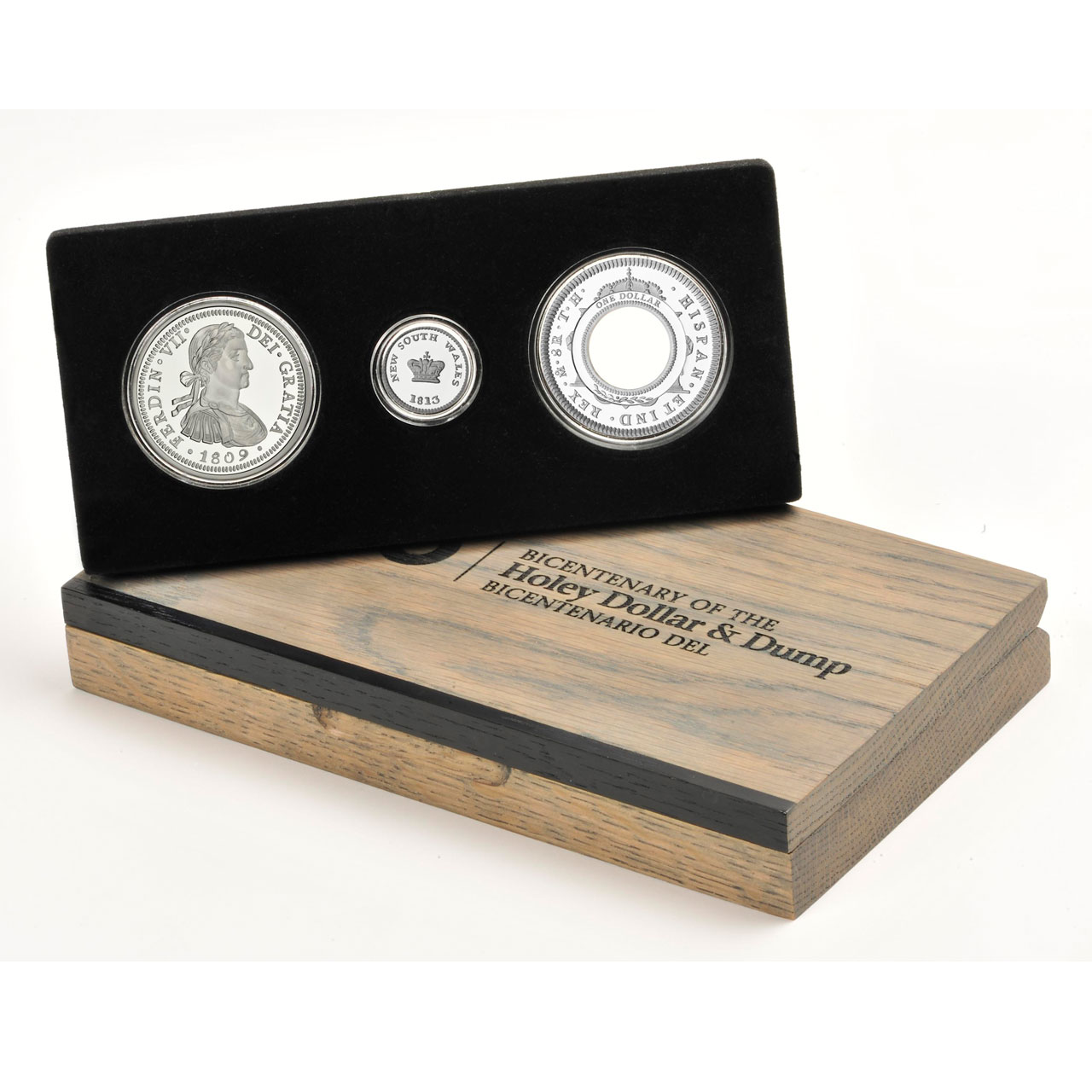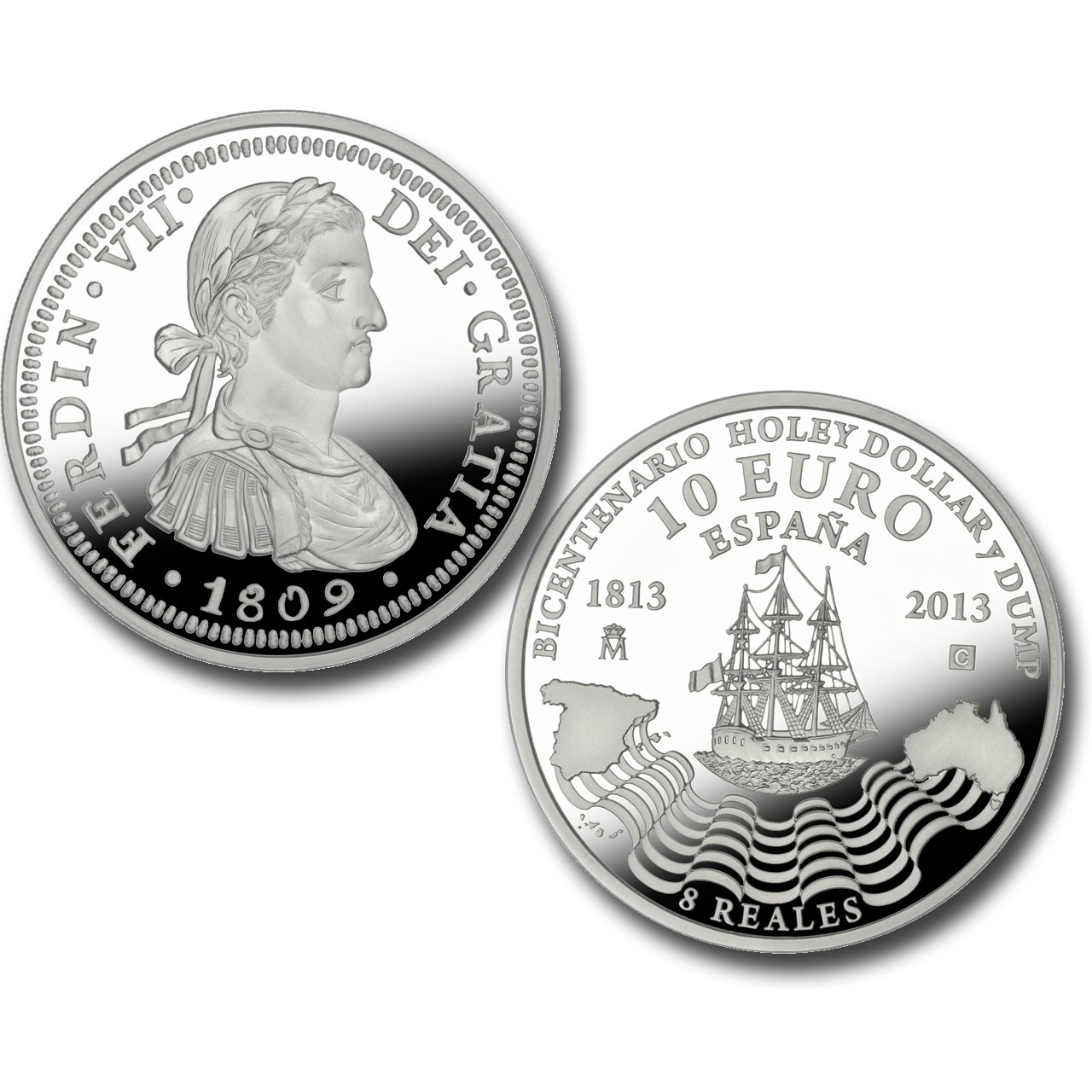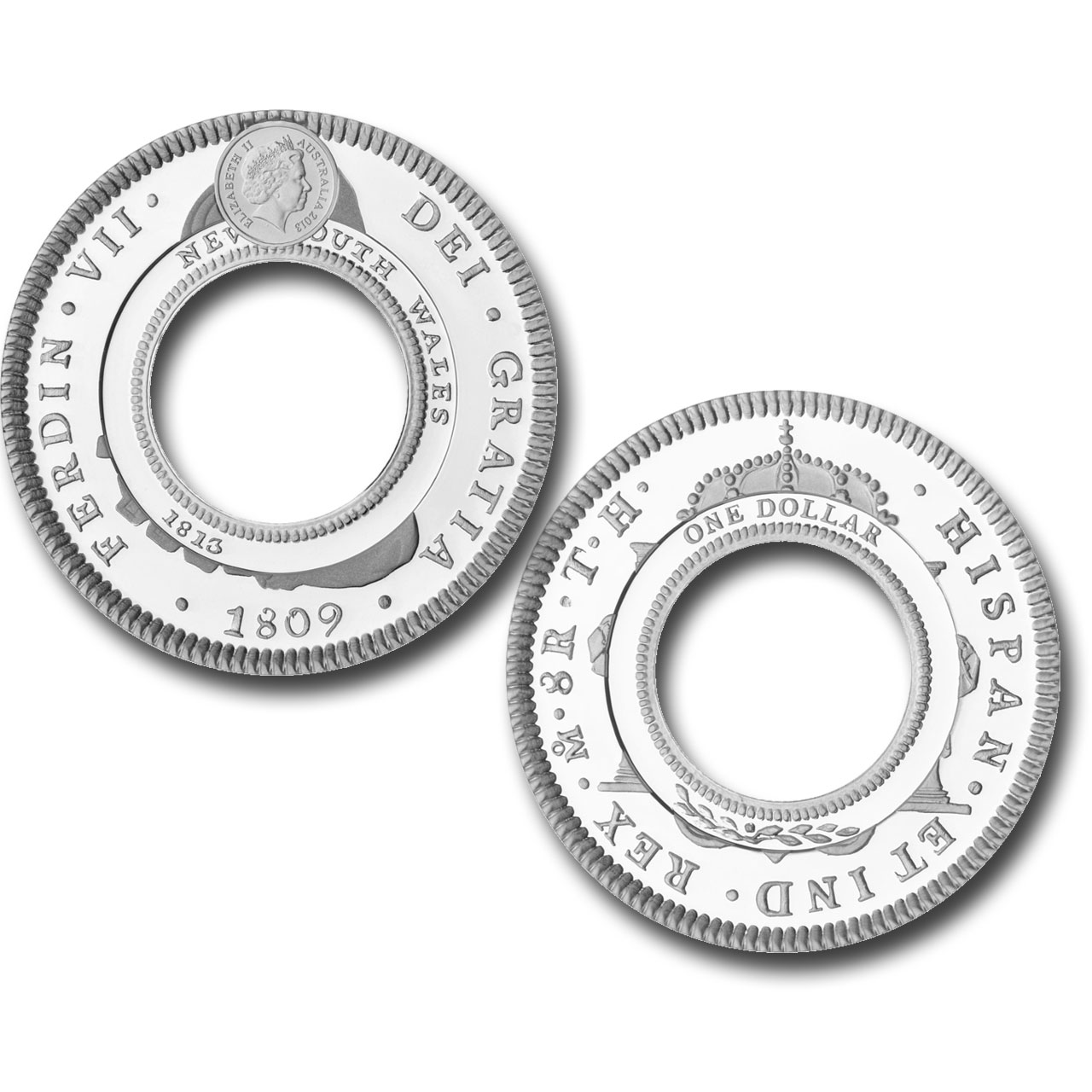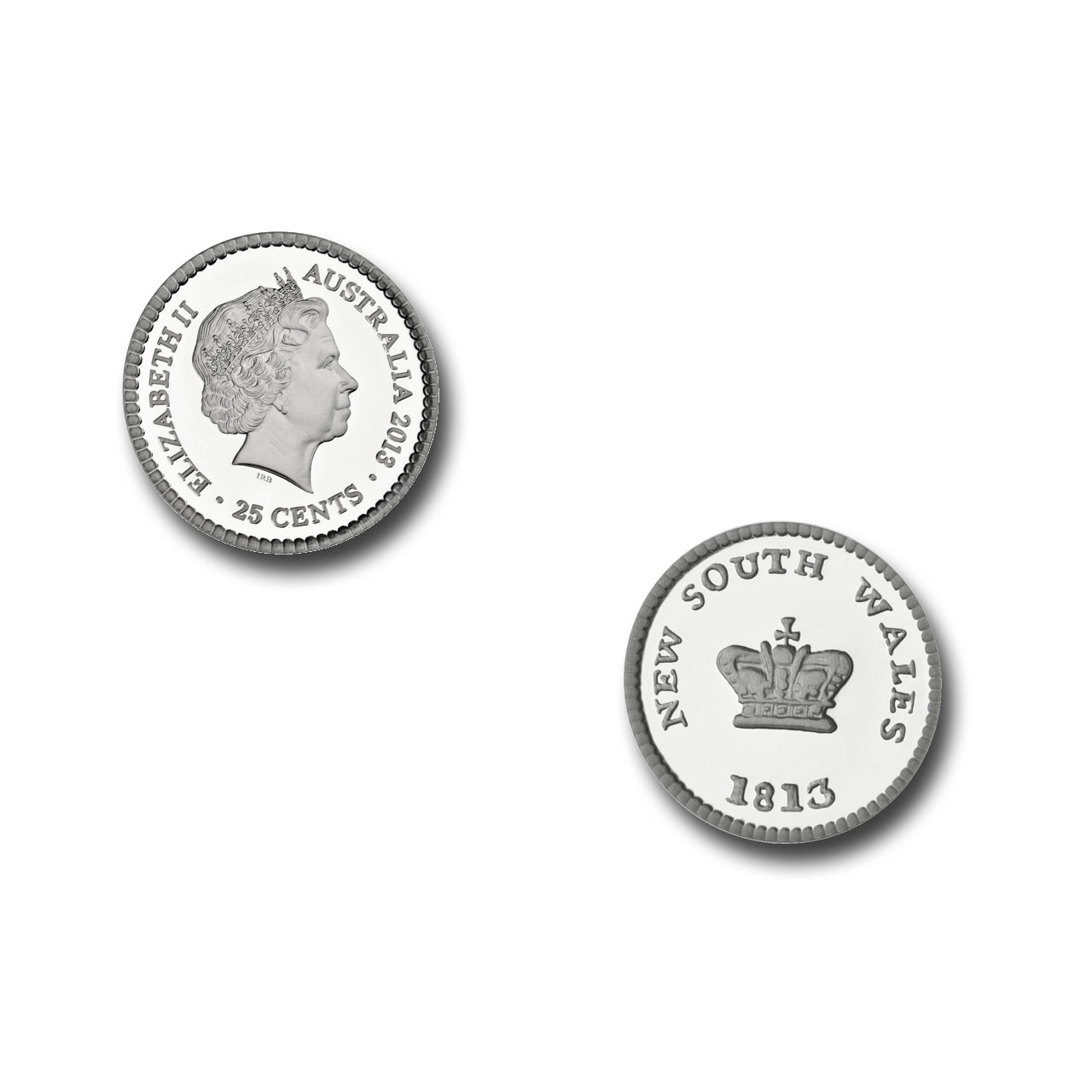Bi-Centennial of the Holey Dollar and the Dump
Introduction
The first Australian coins were struck two hundred years ago deriving from Spanish coins.
The governor of the colony, Lachlan Macquarie, imported a shipment of 40,000 pieces of eight and ordered that a center disk be removed from each coin, thereby producing two separate silver coins: the outer ring called the Holey Dollar and the center disk known as the Dump.
To commemorate this bi-centenary, the Spanish Royal Mint is releasing an issue jointly with the Royal Australian Mint. It is composed of three silver coins, the first of them bringing to mind the Spanish piece of eight, and the other two in memory of the coins that were derived from it, the Holey Dollar and the Dump.
Details
Two hundred years ago in what we know today as Australia, at the time the British colony of New South Wales, there were two problems that needed to be resolved. On the one hand, the shortage of circulating coinage had caused a reversion to promissory notes and even rum being used as instruments of exchange in business dealings. On the other hand, the coins that had previously come into the colony were leaving it again to end up in other markets.
In 1812, the governor of the colony, Lachlan Macquarie, sought to relieve these problems by bringing in on the merchant ship Samarang from the Indian port of Madras, a consignment of 40,000 pieces of eight struck at different Hispanic mints, primarily Mexico, Lima, Potosi, Seville and Madrid. Nonetheless, these 40,000 coins were insufficient.
The anecdotic account regarding the problems facing Governor Macquarie is that the solution was found in the person of a convict, William Henshall, who was actually serving prison time for forgery, and whose idea it was to punch out the center of the Spanish coins and counter-stamp the two parts to duplicate the quantity of coins. At the same time this would render them unusable outside the colony, thus preventing the exodus of coins.
In this way, one coin of eight reales produced two separate silver coins, the outer ring called the Holey Dollar and the center disk known as the Dump.
Upon releasing both coins into circulation in 1814 they became the first coins in history to have been struck on the Australian continent.
Minted in Proof quality, the collector coins in set come in stylish jewel case.
| Name | Composition | Face Value | Weight | Diameter | Mint Run |
|---|---|---|---|---|---|
| 8 reales | .925 sterling silver | 10 € | 27 g | 40 mm | 5.000 |
| Holey Dollar | .999 sterling silver | 1 $ | 18.65 g | 40 mm | 5.000 |
| 8 reales | .999 sterling silver | 25 cents. | 5.80 g | 19 mm | 5.000 |
Spanish 8-reales
The obverse reproduces the image on the obverse of a Piece of Eight of Fernando VII, struck in 1809.
The reverse depicts a vessel, symbolizing the ship that sailed to Australia with the Spanish Pieces of Eight. It features the marks of both the Spanish and the Australian mints and the dates 1813 and 2013. On the lower part of the coin can be seen the outlines of the maps of Spain and Australia, linked together by a series of wavy lines.
Holey Dollar & Dump
Customary as it was for British colonies on one continent or another, and even in the metropolitan area, to deal with Hispanic pesos, and even their clippings that served as fractional coinage, in New South Wales they chose to source Spanish coins for their own currency because at that time these were in use practically world-wide.
Indeed, the 8-reales or Spanish dollar coin was the first universal currency, owing to the acknowledged fineness and weight of these pieces, and to the fact that the "clippers" were not allowed to shave off small, unnoticeable, bits of the coin, which was the prevailing practice in those days when coins were hammer-struck and therefore had no edges.




